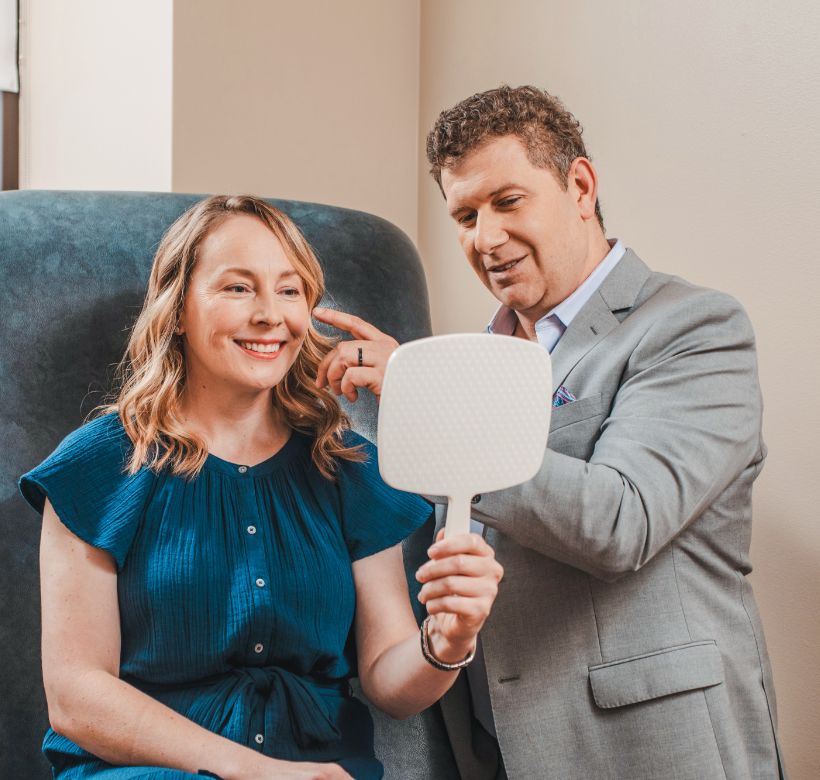Nose Surgery (Rhinoplasty)
Nose surgery, also known as “rhinoplasty,” is a procedure designed to modify the size and shape of the nose as well as correct any breathing problems associated with the nasal passages. As the central feature of the face, the nose plays a significant role in determining overall facial harmony. Rhinoplasty helps create a nose that is in balance with the rest of the face by correcting any disproportionate nasal features or traumatic nasal injuries.
Get In Touch
How can rhinoplasty improve my nose?
Rhinoplasty is one of the most popular procedures in all of plastic surgery because of its ability to dramatically enhance facial harmony by altering one facial feature. Nasal surgery can effectively achieve the following:
- Reduce or augment the overall size of the nose (nasal projection)
- Smooth out bumps and/or depressions on the bridge of the nose
- Narrow the bridge of the nose
- Change the size or shape of the tip of the nose
- Widen or narrow the size of the nostrils
- Adjust the angle between the nose and upper lip (nasal rotation)
- Straighten or remove part of the septum to improve breathing
How is rhinoplasty performed?
Dr. Gougoutas uses an open rhinoplasty technique exclusively as it permits the best visualization of all nasal anatomy. This technique is performed under general anesthesia and requires a small incision across the skin between the nostrils (columella) and within the nostrils.
Q. Will I have any pain or discomfort during the rhinoplasty procedure?
A. No. General anesthesia is administered throughout the entire procedure, so patients do not have to worry about feeling any pain or discomfort during surgery or remembering any portion of their procedure.
Q. How long does a rhinoplasty take to complete?
A. A rhinoplasty generally takes 2-3 hours to complete, although the exact amount of time needed for surgery will depend on the specific corrections that are recommended.
Q. Will rhinoplasty leave scarring?
A. All surgical procedures leave scars. However, incisions required for rhinoplasty will be placed inside the nose and on the skin between the nostrils (columella) to ensure scarring is as inconspicuous as possible.
Q. How long does it take to recover from rhinoplasty?
A. Most patients will need about at least 1 week of downtime to recover from rhinoplasty, after which time they generally feel good enough to return to work. Swelling and bruising, however, may persist for several weeks, and even months after surgery. Strenuous exercises and physical activities should be avoided for at least 6 weeks after surgery.
Q. Will I have a splint on my nose after surgery?
A. Yes. Splints will be placed within each nostril and externally over the bridge of the nose. These will be removed in one week. Depending on your swelling, taping of the nose for several weeks after surgery may be required.
Q. Are any other procedures typically performed during a rhinoplasty?
A. When viewed on profile, the appearance of the nose may be greatly influenced by the chin. Those patients with under-projection of the chin (a “weak” chin) may benefit from a chin augmentation at the time of a rhinoplasty. Your nose and your chin will be evaluated together at the time of your consultation.
Q. When can I expect to see results?
A. Typically results of a rhinoplasty are evident as soon as the splint is removed. Depending on the features altered, however, final results may not be fully realized until swelling goes down over several weeks, and possibly months. It may take up to a year to see the most subtle and detailed contours of your rhinoplasty.
